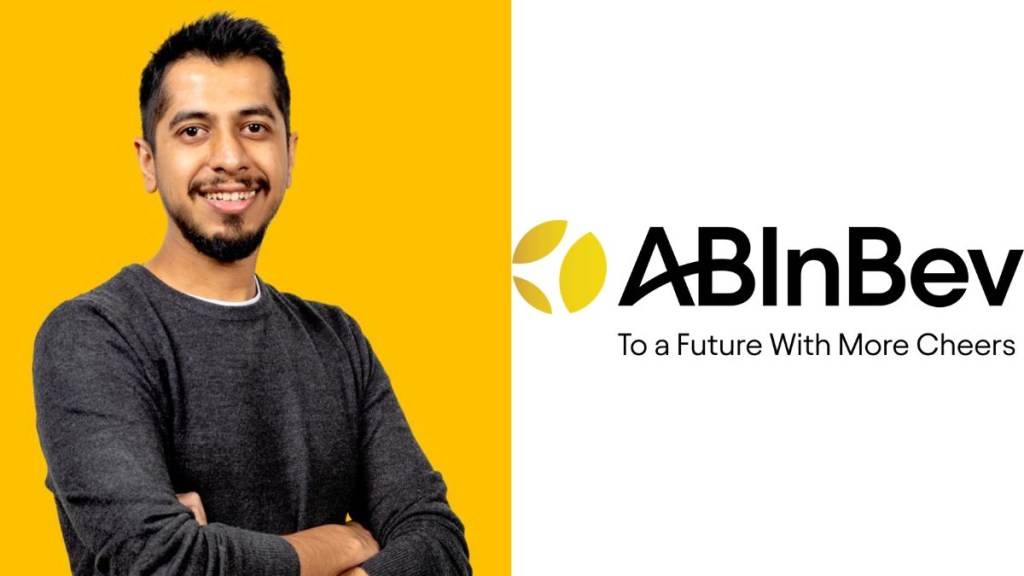The pandemic has brought about notable shifts across industries, and the case has been no different for marketing. Today, digital marketing has become a crucial aspect in order to acquire new customers and retain existing ones. In our weekly BrandWagon Ad Talk series, industry experts highlight what has changed over the past two years and more importantly, are these changes here to stay. Ankit Kataria, director- marketing, AB InBev India, talks to BrandWagon Online, about the dos and don’ts of digital marketing, best marketing campaigns, and more.
What is the difference between launching a brand in today’s digital era versus earlier?
In today’s dynamic digital landscape, the approach to launching a brand has undergone a transformative shift. Unlike the past, where traditional mediums dominated, the digital era offers unique opportunities and challenges.
The reach and speed of digital platforms enable us to engage with a vast audience instantaneously. We can tailor messages to specific demographics, enhancing personalisation and relevance. Additionally, data-driven insights empower us to refine strategies in real-time, optimising campaign performance.
Interactivity has become a hallmark of the digital era. Brands can now foster two-way communication, forging deeper connections with consumers through social media, interactive content, and immersive experiences. However, the digital realm demands constant innovation. Competition for attention is fierce, requiring brands to maintain a consistent and captivating online presence.
Launching a brand in today’s digital era necessitates agility, creativity, and a deep understanding of online dynamics. While challenges abound, the rewards in terms of engagement and growth are unparalleled.
What is the recent best marketing or advertising campaigns you have seen and why?
I’ve been impressed by two standout marketing campaigns recently that demonstrate creativity and relevance to audiences.
Tetley Green Tea’s #everyBODYcan campaign stood out because of its refreshing approach to wellness. Rather than focusing on external appearances and unrealistic body types, Tetley highlighted the importance of internal fitness and immunity through this. By integrating their product into this insightful message, the campaign resonated with health-conscious consumers. Additionally, the use of real-life influencers, rather than actors added authenticity, making for tasteful execution.
Closer to home, Stella Artois’ ‘Probability’ campaign in Argentina showcased the brand’s rich history dating back to 1366 and brilliantly combined it with modern technology, specifically Artificial Intelligence. By analysing art masterpieces from different eras, the campaign calculated the probability of the beer being portrayed as Stella Artois. This innovative approach effectively communicated the brand’s legacy while engaging consumers with the creative use of AI.
Both campaigns exemplify how strategic thinking, creativity, and relevancy to the audience can elevate marketing efforts, making them stand out.
Which brand in the last year has made the best use of digital and how?
Netflix has undoubtedly made the best use of digital marketing. Despite being a leading global OTT player, the company has brilliantly localised its content and strategies for Indian audiences. With the rise in streaming competition, they have embraced innovative digital strategies to retain and attract subscribers. Campaigns like “The Netflix Binge Factory,”, where they leveraged meme culture to create shareable content that resonates with audiences showcase their understanding of the digital landscape.
Personalised content recommendations from Netflix, based on user behaviour, enhanced the overall user experience on the platform, while driving conversations. Furthermore, the use of AI algorithms to analyse viewers’ preferences, enabled them to deliver highly targeted advertisements and content suggestions. Through interactive storytelling on platforms like Instagram and Twitter, they engaged users in a dynamic and captivating way.
In a post-COVID world, what are the dos and don’ts of digital marketing?
It’s essential for brands to use digital marketing to align with evolving consumer behaviour. Here’s what I think digital marketers should and should not be doing.
Do’s
- Cultivate Genuine and Authentic Connections: Prioritise empathetic and authentic conversations with consumers. Show understanding and care in your messaging to build stronger connections with your audience.
- Harness social media for Brand Recognition: Leverage social media platforms to strengthen brand recognition and affection. Engage your audience with valuable content that resonates, fostering heightened awareness and loyalty.
- Prioritise Customer Experience: In the digital landscape, the customer experience takes centre stage. Ensure a seamless and gratifying experience across all touchpoints to retain and delight your customers.
- Adopt Agile Marketing Strategies: Stay flexible and responsive to changing consumer needs. Adopt agile marketing strategies that allow you to adapt quickly to market shifts and trends.
Don’ts
- Ignore Social Media Engagement: Neglecting social media engagement can lead to missed opportunities to connect with your audience. Regularly interact with followers and respond to their queries and feedback.
- Overlook Data Privacy: Respect customer data privacy and comply with regulations. Mishandling customer data can damage trust and reputation.
- Rely Solely on Traditional Advertising: While traditional advertising has its place, don’t rely solely on it. Embrace digital channels to reach and engage a wider audience effectively.
- Underestimate Content Quality: Content remains king in digital marketing. Don’t compromise on the quality and relevance of your content to maintain consumer interest and engagement.
One recent bad case of advertising you have seen, and why?
Each brand campaign is underpinned by its own unique insights, thoughts, and contextual factors. Advertising operates within a realm of subjectivity, recognising that what might prove effective for one brand might not necessarily translate for another. Ultimately, the pivotal aspect revolves around accurately identifying and targeting the intended audience.

